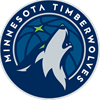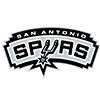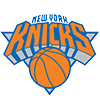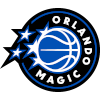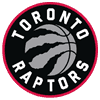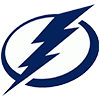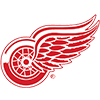In July 2024, the Orioles acquired Trevor Rogers from the Marlins in exchange for Kyle Stowers and Connor Norby. The deal was met with immediate scrutiny, with most feeling not only that the Orioles were fleeced, but that Rogers was not the answer to Baltimore's dire rotation needs.
Rogers was, in fact, not the answer (at least not in 2024), making more starts at Triple-A Norfolk than he did for the Orioles and posting a 7.11 ERA and 12:10 K:BB over 19 innings in the four starts he did make for Baltimore. A year later, Rogers finished in the top-10 in the American League Cy Young voting, marking one of the biggest turnarounds of any starting pitcher in recent memory.
The jury is still out on who "won" the Baltimore/Miami trade, as Stowers had a breakout year himself and Norby still has promise, but there's no disputing Rogers has massively improved his standing. What changed for him in 2025, and can he keep things rolling in 2026?
The first, and arguably most important, step in Rogers' bounce-back journey came last offseason when he paid a visit to Driveline Baseball. Travis Sawchik wrote an excellent article for DrivelineBaseball.com detailing Rogers' experience at the noted training facility, and I would encourage you to read that piece in its entirety. One of the main points Sawchik touched on was Rogers needing to add strength, particularly in his lower half.
Rogers dealt with nagging back problems which first cropped up during the
In July 2024, the Orioles acquired Trevor Rogers from the Marlins in exchange for Kyle Stowers and Connor Norby. The deal was met with immediate scrutiny, with most feeling not only that the Orioles were fleeced, but that Rogers was not the answer to Baltimore's dire rotation needs.
Rogers was, in fact, not the answer (at least not in 2024), making more starts at Triple-A Norfolk than he did for the Orioles and posting a 7.11 ERA and 12:10 K:BB over 19 innings in the four starts he did make for Baltimore. A year later, Rogers finished in the top-10 in the American League Cy Young voting, marking one of the biggest turnarounds of any starting pitcher in recent memory.
The jury is still out on who "won" the Baltimore/Miami trade, as Stowers had a breakout year himself and Norby still has promise, but there's no disputing Rogers has massively improved his standing. What changed for him in 2025, and can he keep things rolling in 2026?
The first, and arguably most important, step in Rogers' bounce-back journey came last offseason when he paid a visit to Driveline Baseball. Travis Sawchik wrote an excellent article for DrivelineBaseball.com detailing Rogers' experience at the noted training facility, and I would encourage you to read that piece in its entirety. One of the main points Sawchik touched on was Rogers needing to add strength, particularly in his lower half.
Rogers dealt with nagging back problems which first cropped up during the second half of the 2021 season. He made one trip to the injured list that year and another during the 2022 campaign. While those were the only two back-related IL stints Rogers had, a fear of aggravating his back problem led to the pitcher avoiding lower-body workouts which, in turn, resulted in him losing strength and, eventually, velocity.
For the latest injury news, check out RotoWire's MLB Injury Report.
When Rogers made the All-Star team and finished runner-up in the National League Rookie of the Year voting in 2021, he averaged 94.5 mph with his four-seamer and the pitch received a plus-14 Run Value, per Baseball Savant. Among full-time starting pitchers, it was the 12th-highest grade given to a four-seamer that year. By 2024, however, Rogers' four-seamer velocity had tumbled to 91.9 mph, and it received a minus-1 Run Value.
Just as Rogers' work at Driveline had begun bearing fruit, he suffered a right knee subluxation in January, an injury which meant no spring training appearances and a trip to the IL to begin the season. The left-hander was game-ready by late April but struggled after a long layoff, posting a 7.71 ERA in his first five rehab outings. Rogers made a terrific spot start for the Orioles in late May during the second game of a doubleheader but was then returned to Triple-A Norfolk for three more starts. By late June, though, Rogers was back in the majors for good, and so was his fastball.
You can see above the wild ride Rogers' four-seamer velocity has been on. All told, his velocity on the pitch averaged 93.1 mph in 2025, which is still down from its peak but a big jump up from 2024. Unsurprisingly, the effectiveness of the pitch also returned.
Rogers' four-seamer had a Run Value of plus-16 during his 18 starts with the Orioles, which ranked 12th in baseball among four-seamers for starting pitchers. Opposing batters hit only .158 off Rogers' heater, which was the second-lowest among four-seamers for starters, behind only Bryan Woo (.153). Opponents slugged just .252 off the pitch, which was the best mark in baseball for starting pitchers. In 2024, the opposition hit .250 with a .463 slugging percentage off Rogers' four-seamer.
Rogers couldn't get by on his four-seamer alone, of course. His changeup, slider and sweeper were also effective, earning Run Values of plus-7, plus-4 and plus-3, respectively. Opponents hit .202 with a .392 slugging percentage off the southpaw's changeup, .061 with a .152 slugging percentage off his slider and .065 with a .129 slugging percentage against his sweeper.
The lone pitch among Rogers' five offerings that didn't grade out well was his sinker, which garnered a minus-1 Run Value, with the opposition hitting .296 with a .380 slugging percentage (and .508 xSLG) off the pitch. Rogers cut his usage of his sinker from 24.2 percent to 15.1 percent year-over-year, and he might be better off dropping that even more in 2026. The sinker is, however, one of Rogers' two pitches (the changeup being the other) that allows him to sport an above-average groundball rate (46.4 percent), so it has some use in that regard.
The sweeper was a new pitch for Rogers in 2025 which he developed in the pitch design lab at Driveline. It represented just 7.3 percent of his repertoire this season, which was easily the lowest of his five offerings. It was incredibly effective when he did use it, picking up whiffs at a 37.7 percent rate, in addition to the aforementioned .065 batting average and .129 slugging percentage against. Rogers may or may not ever feel comfortable enough with the sweeper to use it more often, but it's clearly a pitch that shows plenty of promise.
2025 | Career | |
| HardHit% | 48.4 | 41.3 |
| BABIP | .228 | .304 |
| LOB% | 84.2 | 72.4 |
If you're looking for reasons to be skeptical of Rogers' 2025 performance, the numbers above are a good start. The 48.4 percent hard-hit rate Rogers surrendered this season was not only high for him, it ranked in just the third percentile in all of baseball. From 2020 to 2023, his hard-hit rate never even reached 40 percent in a single season. And yet, even with all the hard contact, Rogers' BABIP was extremely low and his left-on-base rate was extremely high. Those numbers simply don't jibe with each other, so some level of regression is virtually a given.
You also have to look at Rogers' durability — or lack thereof — when mulling the lefty's ability to repeat what he did this season. He's never exceeded 25 starts or 133 innings at the major-league level, and the past back problems that forced him to alter his workouts have the potential to resurface. That said, he hasn't encountered any arm-related issues over the last two seasons, so I'm not sure we should consider Rogers more of an injury risk than your average pitcher.
At 2.82, FIP is the ERA estimator that's kindest to Rogers, while SIERA, at 3.75, dings him the hardest. An xERA of 3.35 basically splits the difference between the two. I suspect Rogers and the Orioles would gladly take a mid-3s ERA in 2026, and I think it's reasonable for him to be somewhere around there. There's clear regression coming with his BABIP and LOB%, but could Rogers counter that in continuing to bump his velocity back up to its peak level? And can he turn a promising sweeper into one of his primary weapons?
Rogers' ADP in early NFBC leagues sits at 152.6, and he's the No. 64 pitcher coming off the board. There are wild swings with the min (26!) and max (214), and I suspect the cost variance from draft-to-draft with Rogers will continue to be wide. At 152.6, I'm closer to buying than selling.







